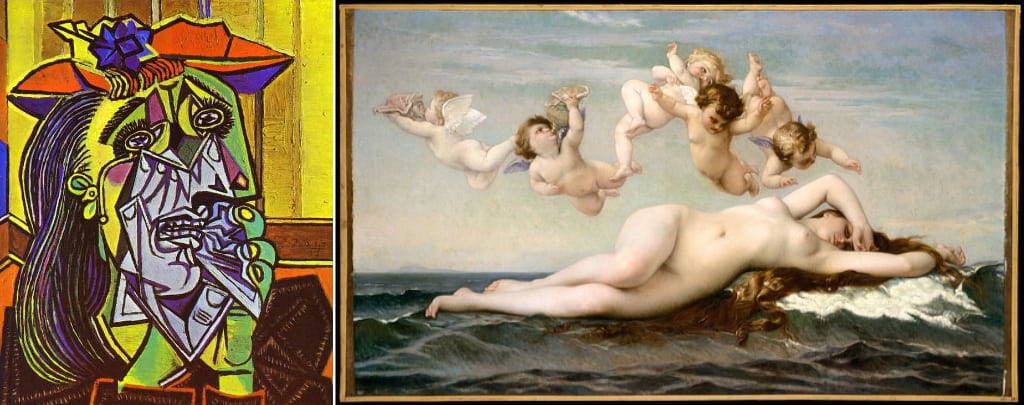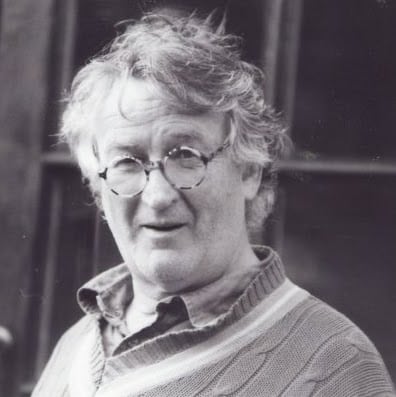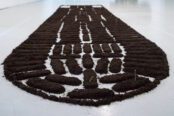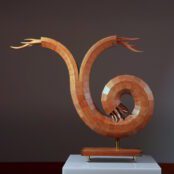Pablo Picasso, Guernica, 1937
Science, of course, is immensely important; perhaps even the patterns made by diffraction are important too; even if only as a bi-product of some scientific goings-on. Diffraction patterns, I have recently discovered, are light projections through tiny slits so that the light, being made up of small particles and travelling along waves gets distorted as it passes through these slits and onto a screen.
Where could that description be clearer? Try here!
The Attached (below) Poses as Aesthetics
Scientists, being very clever indeed, feel no hesitation when striding outside their realm and spreading themselves, nay, slathering themselves, (the great beer-bellied, buttery, air-banjo-ing, beardy bunch of bores) upon matters more human and urbane; in a word: matters of culture.
Thus, we find that someone thinks it is a project worthy of research to wonder how the outline of a country might make for an ‘aesthetic’ pleasure.
What is appalling about this is that it holds in utter disregard the importance of aesthetics as a proper subject of philosophy.
Scientists must confine themselves to the discovery of causal networks and abstract theoretical arguments which hold empirical findings together. Thus they will be at the mercy of the world and its process of unfolding.
Aesthetics is Normative; Science Not
Aesthetics is not an empirical matter. Science is. Aesthetics is normative. In this it trots alongside morality.
At one time it was thought that light was made up entirely physical particles: photons. That view was superceded by updated science. The more recent view was that light was immaterial and made up of wavelengths. Then this view was transmuted yet again by science, having discovered that light is susceptible to gravity. And so we now think of light in terms of ‘wavicles’.
None of this science is normative. It is merely, though again I stress, importantly, descriptive. Human matters are different. We could not find out that, despite appearances to the contrary, genocide is a virtue. No deeper searching or refined understanding, could bring us to the view that genocide is really a good thing. Morality, like aesthetics, deals with appearances. Perhaps that is why the scientific mind finds it superficial. It is. But importantly so. Saying it is superficial by no means diminishes the importance , for human beings, of ethics.
Aesthetics Contains Judgement
Aesthetics is much the same. Things do cause us pleasure; such as custard and seaside paddling. But these pleasures are simple and do not require that we enter into the world of aesthetic judgement.
p
Picasso, Weeping Woman, 1937 Alexandre Cabanel, The Birth of Venus, 1875
On the other hand, when I say of Picasso that he is a better painter than was Cabanel, I make a judgement about how the works of these painters ought to be seen. So too, preferring the composer, Arvo Pärt to Johann Strauss, or the poet, T. S. Eliot to Dante Gabriel Rossetti. These judgements implicitly call upon reason and agreement. (Reason and agreement may not be forthcoming but we are frustrated with our own judgements if we cannot find the resources within to support them.)
Were the outlines – the examples given include both coastlines and lines settled by treaty – to be genuinely aesthetic, we would at least try to find supporting normative arguments for the judgements that lean toward one rather the other of two diffraction patterns.
Scientists, clever darlings, should stick to what they do best; or else risk looking as silly as a Prime Minister pretending to dance.
________________________________________________________________________________
How Aesthetically Pleasing Is Your Country’s Diffraction Pattern?
September 19th, 2018
You may be wondering how aesthetically pleasing is your country’s diffraction pattern. This new physics study proves that Albert F. Rigosi shares your mental hobby:
“Analysis of Fraunhofer Diffraction Patterns’ Entropy Based on Apertures Shaped as National Borders,” Albert F. Rigosi, Optik, vol. 172, November 2018, pp. 1019-1025. (Thanks to John Ng for bringing this to our attention.)The author, at Columbia University and the National Institute of Standards and Technology, reports:
“How aesthetically pleasing is your country’s diffraction pattern? This work summarizes the calculated and experimental Fraunhofer diffraction patternsobtained from using apertures lithographically formed into shapes of national borders. Calculations are made based on the fast Fourier transform of the aperture images. The entropy of a diffraction pattern image, based on its two-dimensional gradient, for each of 113 nations has also been computed. Results suggest that most nations’ diffraction patterns fall under one of two prominent trends forming as a function of geographical area, with one trend being less entropic than the other.”

The top images here shows shows a diagram of the experimental setup. The bottom collection of images show: “Three example nations. (a) The aperture for the continental USA is depicted. (b) is the FFT calculation of the aperture above, and the corresponding experimental data is shown below in (c). (d) The aperture for Egypt is depicted, along with its FFT and experimental data in (e) and(f), respectively. (g) The aperture for Papua New Guinea is shown with its (h) calculated FFT and (i) experimental diffraction data.”
Additional everything can be found in an appendix.

Ed studied painting at the Slade School of Fine Art and later wrote his PhD in Philosophy at UCL. He has written extensively on the visual arts and is presently writing a book on everyday aesthetics. He is an elected member of the International Association of Art Critics (AICA). He taught at University of Westminster and at University of Kent and he continues to make art.


















